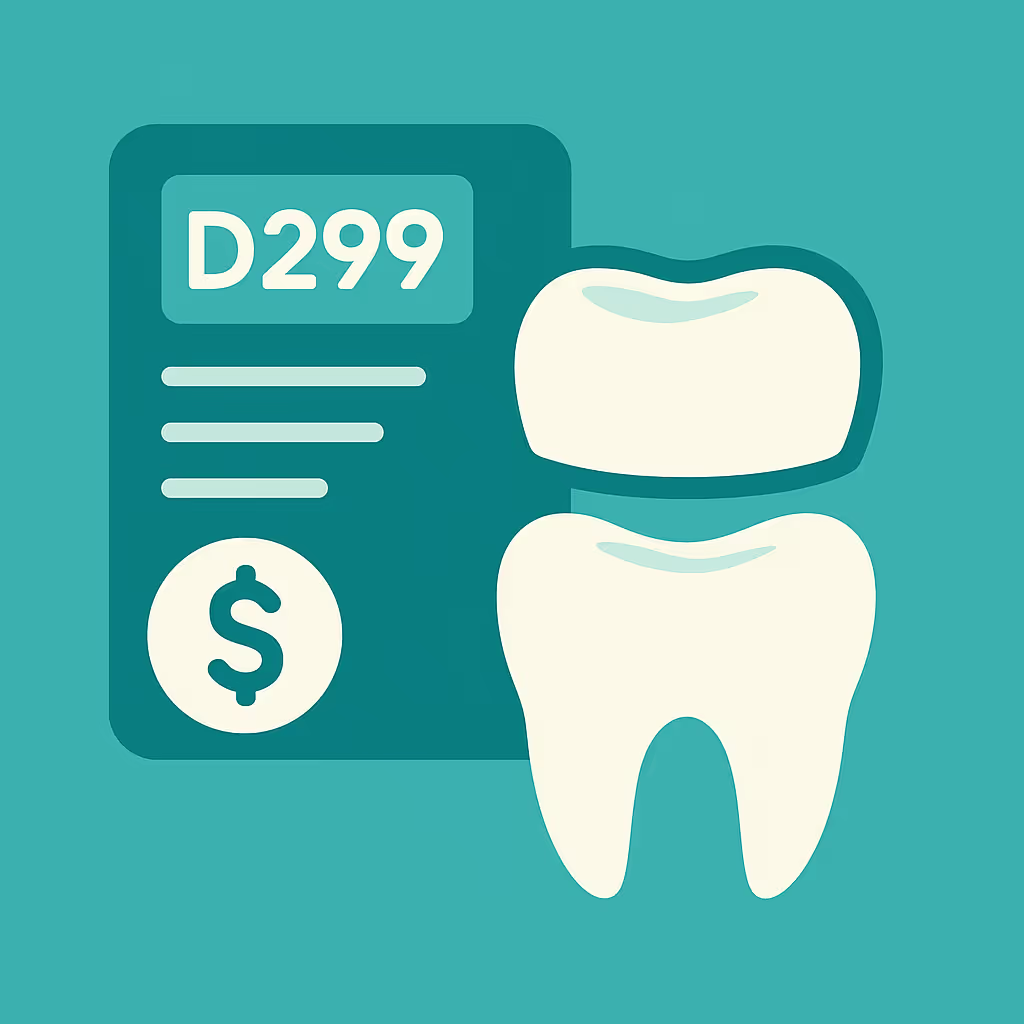Understanding Dental Code D7414
When to Use D7414 dental code
The D7414 dental code is designated for the excision of a malignant lesion in the oral cavity when the lesion is greater than 1.25 cm in diameter. This CDT code is specifically used when a dentist or oral surgeon removes cancerous tissue that exceeds this size threshold, ensuring accurate reporting for both clinical and billing purposes. It is important to distinguish D7414 from similar codes, such as those for benign lesions or smaller malignant lesions, to avoid claim denials and ensure proper reimbursement.
Documentation and Clinical Scenarios
Accurate documentation is critical when using D7414. The clinical record should include:
- A detailed description of the lesion, including its size (must be greater than 1.25 cm), location, and visual characteristics.
- Diagnostic evidence supporting malignancy, such as biopsy results or pathology reports.
- The surgical procedure performed, including anesthesia used, margins of excision, and any complications or additional treatments.
- Pre- and post-operative photographs or radiographs when available.
Common clinical scenarios include excision of squamous cell carcinoma, malignant melanoma, or other oral cancers where the lesion exceeds 1.25 cm. Proper documentation not only supports the use of D7414 but also protects the practice in the event of an insurance audit or claim appeal.
Insurance Billing Tips
To maximize reimbursement and minimize delays, follow these best practices when billing D7414:
- Verify coverage: Before treatment, confirm the patient’s insurance benefits for oral surgery and malignant lesion excision. Some plans may require pre-authorization or a medical necessity review.
- Submit comprehensive documentation: Attach all relevant clinical notes, pathology reports, and images to the claim. Incomplete submissions are a leading cause of denials.
- Use correct coding: Ensure that D7414 is not confused with codes for benign lesions (such as D7412) or smaller malignant lesions. Double-check the lesion’s size in the clinical notes.
- Appeal denials promptly: If a claim is denied, review the Explanation of Benefits (EOB) for the reason, gather additional supporting documentation, and submit a timely appeal. Include a letter of medical necessity if required.
Staying proactive with insurance verification and thorough documentation streamlines the revenue cycle and reduces accounts receivable (AR) delays.
Example Case for D7414
Consider a 58-year-old patient presenting with a suspicious lesion on the lateral border of the tongue measuring 1.8 cm. The dentist performs a biopsy, confirming squamous cell carcinoma. After discussing treatment options and obtaining consent, the dentist excises the lesion with appropriate margins under local anesthesia. The procedure is documented in detail, including pre- and post-op photos, and the pathology report is attached to the insurance claim. The claim is submitted using D7414, and after initial review, the insurance carrier requests additional documentation. The office promptly provides the requested information, resulting in successful reimbursement.
This real-world scenario highlights the importance of precise documentation, correct code selection, and proactive communication with payers when billing for excision of malignant lesions greater than 1.25 cm.





